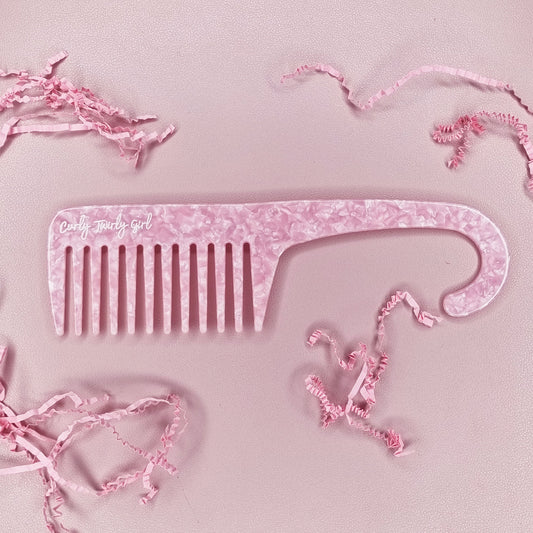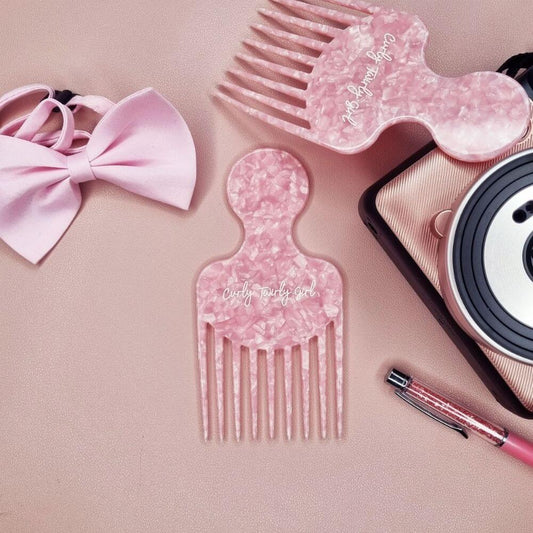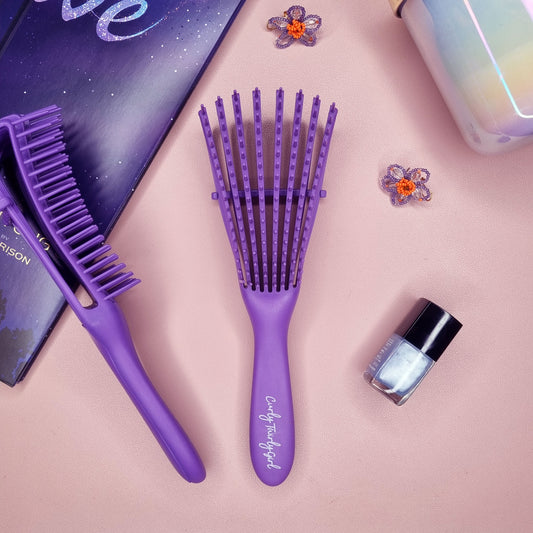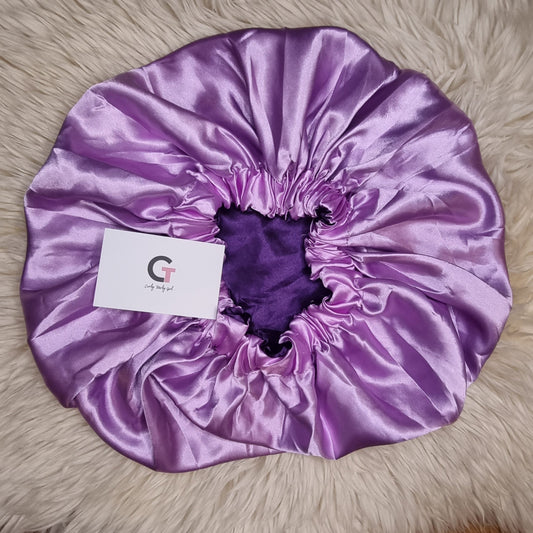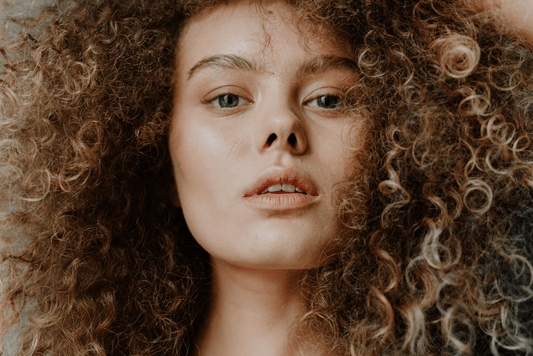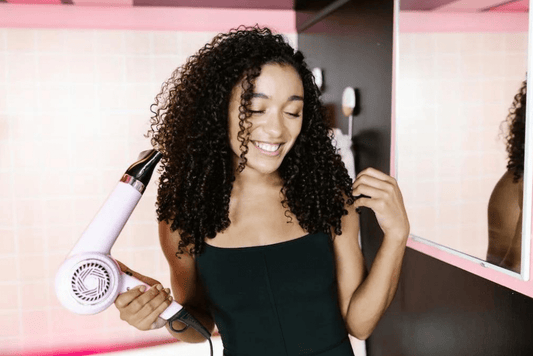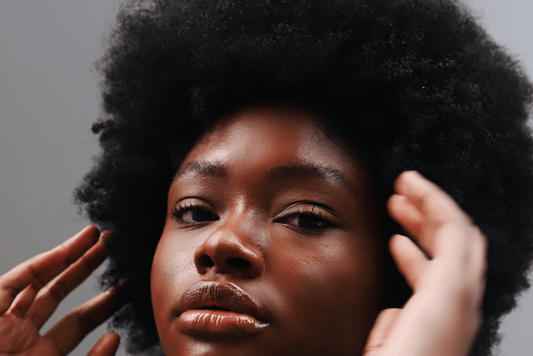Maintaining healthy curly hair can be a complex task. To achieve this, you must understand the delicate balance between protein and moisture. Excess moisture can result in hair that appears limp, mushy, and lacking vitality, while an abundance of protein can render it brittle and resembling straw.
So, the question remains: How can you determine whether your hair craves more protein, moisture, or is currently in the sweet spot? Read the article below to find out.
Why Protein and Moisture Are Vital for Curly Hair
Protein and moisture are the building blocks of your hair. Protein, specifically keratin, forms the structural foundation, while moisture keeps your curls flexible, elastic, and vibrant. Striking the right balance is essential, as too much of either can lead to various hair issues.
Determining Your Hair's Needs: Protein or Moisture
Balancing protein and moisture is essential for maintaining healthy and vibrant hair.
Balanced hair: Knowing if your hair is balanced is easy to determine. When you gently pull on a strand of hair, it stretches and then returns to its natural curl pattern. It doesn't break or feel mushy, indicating that your hair has a balanced protein-moisture ratio.
However, if the balance is compromised and your curls are experiencing too much of either protein or moisture, it is crucial to recognise the signs and adjust your hair care routine as soon as possible.
|
Signs of Too Much Protein
|
Signs of Too Much Moisture
|
|---|---|
|
Hair feels stiff and unyielding
|
Hair appears limp and lifeless
|
|
Increased breakage and brittleness
|
Excessive frizz and lack of definition
|
|
Rough, straw-like texture
|
Loss of natural curl pattern
|
|
Tangles and snags
|
Hair feels heavy and greasy
|
|
Reduced elasticity
|
Difficulty in holding hairstyles
|
To understand and find out what your curls need, follow these steps:
1. Elasticity: Test Gently pull a strand of hair when wet. If it stretches and returns to its original shape, your hair has a good balance of protein and moisture. If it breaks or feels mushy, it lacks protein.
2. Texture Evaluation: Observe your hair's texture and appearance. Overly dry, brittle, and frizzy hair often indicates a lack of moisture, while limp, lifeless hair may indicate excess protein.
3. History of Chemical Treatments: If you've recently had chemical treatments like colouring, perming, or relaxing, your hair likely needs more protein to rebuild its structure.
4. Pay Attention to Seasonal Changes: Hair needs can vary with the seasons. In humid weather, hair may require more protein to resist excessive moisture absorption, while in dry, cold weather, extra moisture may be needed.
Read our how to care for curly hair in winter 
The Effects of Too Much Protein
Excessive protein, otherwise know are protein overload, can make your hair stiff, brittle, and prone to breakage. The ability to grow healthy curly hair and retain length will be challenging. It may lose its natural elasticity, leading to rough and unmanageable curls. Adding moisture to your routine is vital. To boost moisture, use hydrating shampoos, conditioners, and leave-in products. Ingredients such as aloe vera, glycerin, and natural oils like coconut or argan oil can help retain moisture. Below are steps to fix protein overload.
How to Fix Protein Overload
| Steps to Fix Protein Overload |
|---|
| 1. Clarify Your Hair: Start by using a clarifying shampoo to remove excess product buildup, including protein-rich products. This provides a clean slate for the next steps. |
| 2. Use a Moisturizing Shampoo: Switch to a moisturizing or hydrating shampoo and conditioner. Look for products with ingredients like glycerin, aloe vera, and natural oils to boost moisture. |
| 3. Avoid Protein-Rich Products: Temporarily eliminate products with protein from your hair care routine, including conditioners, treatments, and stylers. |
| 4. Deep Conditioning: Incorporate regular deep conditioning treatments using moisture-rich masks or deep conditioners. Leave them on for an extended time to restore moisture balance. |
| 5. Gentle Detangling: Be extra gentle when detangling your hair to minimize breakage. Use a wide-toothed comb or your fingers, and apply a detangling spray or conditioner to ease the process. |
| 6. Avoid Heat Styling: Reduce or eliminate the use of heat styling tools, which can further dry out the hair. Opt for heatless styling methods instead. |
| 7. Trim Ends: Trim any overly damaged or split ends to prevent further breakage and promote healthy growth. |
| 8. Gradual Reintroduction: Once your hair starts to regain balance, gradually reintroduce protein products, but in moderation. Pay attention to how your hair responds. |
| 9. Regular Assessments: Continue to assess your hair's condition and make adjustments to your routine as needed to maintain a healthy protein-moisture balance. |
The Effects of Too Much Moisture
Over-moisturized hair can become limp, heavy, and overly flexible, often causing frizz and a lack of definition in your curls. Adding protein to your routine is advised. Consider using protein-rich products like deep conditioning treatments, masks, or leave-in conditioners. Opt for products with ingredients like hydrolyzed wheat protein, keratin, or collagen.
How to Fix Too Much Moisture
| Steps to Fix Moisture Overload in Curly Hair |
|---|
| 1. Clarifying Shampoo: Use a clarifying shampoo to remove excess product buildup and open up the hair's cuticles for effective moisture absorption. |
| 2. Protein Treatments: Incorporate protein-rich treatments to restore the protein-moisture balance in your hair. Protein masks or deep conditioners can help strengthen the hair. |
| 3. Balanced Conditioner: Choose a balanced conditioner that provides moisture without overloading your hair. Look for ingredients like glycerin, aloe vera, or hyaluronic acid. |
| 4. Reduced Product Use: Cut back on heavy, moisture-rich products. Opt for lightweight leave-ins and styling products to avoid overwhelming your curls. |
| 5. Regular Deep Conditioning: Deep condition your hair with a balanced product regularly to maintain hydration and prevent further moisture overload. |
| 6. Avoid Humectants: In high-humidity conditions, limit products with humectants like glycerin, which can draw in excess moisture from the air. |
| 7. Gentle Detangling: Be gentle when detangling to prevent further damage to your hair. Use a wide tooth comb or your fingers. |
| 8. Moisture Checks: Regularly assess your hair's needs. Adjust your routine as required to prevent future moisture overload. |
| 9. Patience and Consistency: Achieving the right balance takes time. Be patient and consistent with your hair care routine. |
Understand Product Ingredients
When selecting hair products, review the ingredient list. Ingredients like "hydrolyzed" or "amino acids" typically indicate protein, while humectants (glycerin, propylene glycol) suggest moisture retention.
Does Hair Type Determine Whether Hair Needs Protein or Moisture?
The ideal balance between moisture and protein in curly hair varies depending on your specific hair/curl type. Generally, coarser hair types, such as Type 4, tend to benefit more from added moisture. These hair types often have a dense, tight curl pattern that can be prone to dryness, and increased moisture helps to enhance elasticity and reduce frizz.

On the other hand, finer hair types, such as Type 2 or Type 3, may require more protein. These hair types can be more vulnerable to moisturising, which can lead to limpness and a lack of definition.
However, it's important to remember that there is no one-size-fits-all solution. Each individual's hair is unique, and finding the right balance between protein and moisture involves paying close attention to your hair's specific needs and adjusting your hair care routine accordingly. Regular assessments and experimentation will help you determine the ideal protein-moisture balance for your curls.
Conclusion
Achieving the perfect balance of protein and moisture is the key to healthy, beautiful curly hair. Remember that the right balance can vary depending on your hair type, the season, and any chemical treatments you've had.
Pay attention to the signs your hair is giving you, perform elasticity tests, and adapt your hair care routine accordingly. By finding this equilibrium and selecting the right products, you'll unlock the secret to gorgeous, resilient, and bouncy curls. Balance is the key to thriving with your natural curls.
Do you currently suffer with protein overload, or over-moisturised curls? Let us know in the comments.


